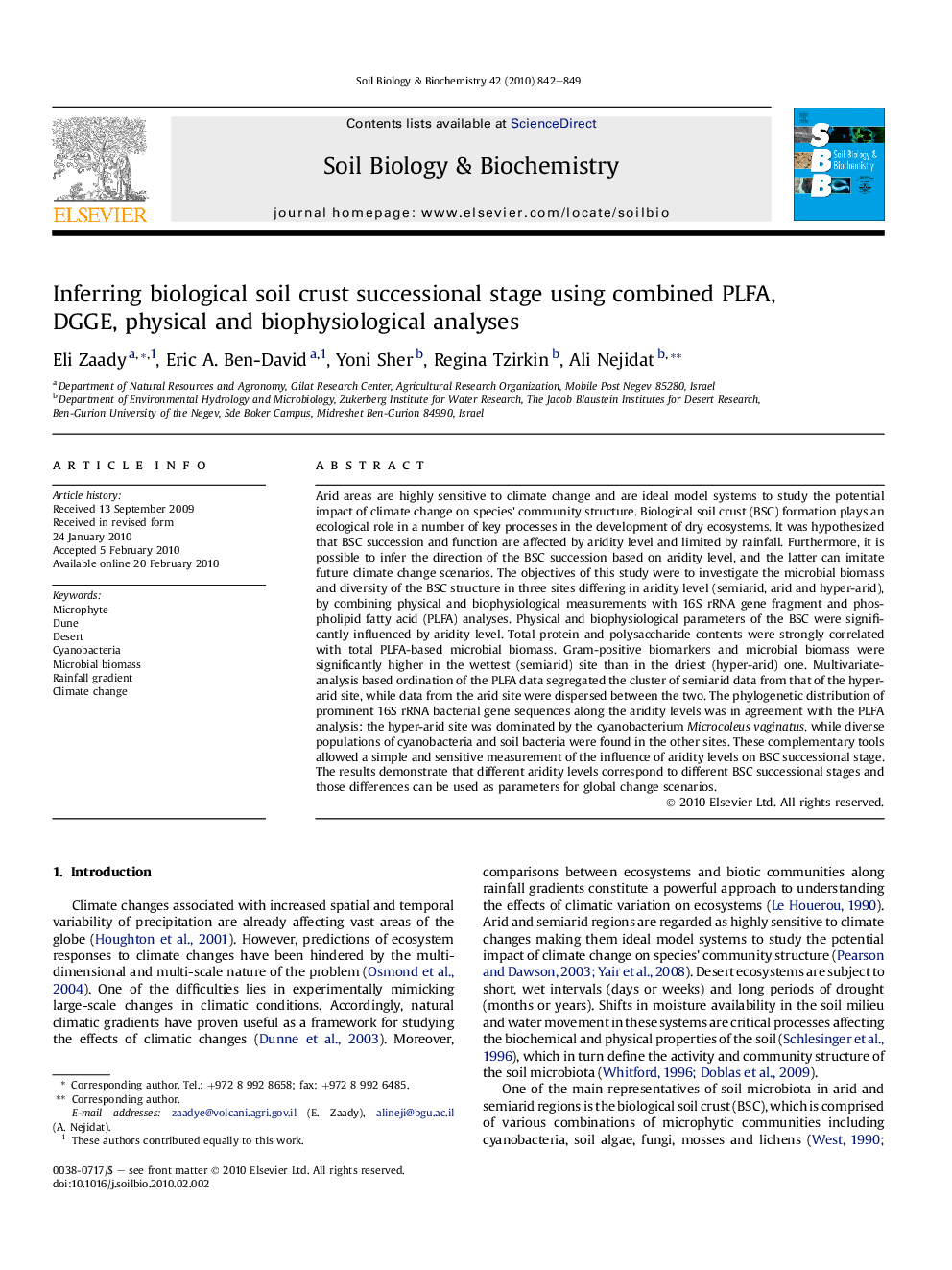| کد مقاله | کد نشریه | سال انتشار | مقاله انگلیسی | نسخه تمام متن |
|---|---|---|---|---|
| 2024972 | 1069973 | 2010 | 8 صفحه PDF | دانلود رایگان |

Arid areas are highly sensitive to climate change and are ideal model systems to study the potential impact of climate change on species' community structure. Biological soil crust (BSC) formation plays an ecological role in a number of key processes in the development of dry ecosystems. It was hypothesized that BSC succession and function are affected by aridity level and limited by rainfall. Furthermore, it is possible to infer the direction of the BSC succession based on aridity level, and the latter can imitate future climate change scenarios. The objectives of this study were to investigate the microbial biomass and diversity of the BSC structure in three sites differing in aridity level (semiarid, arid and hyper-arid), by combining physical and biophysiological measurements with 16S rRNA gene fragment and phospholipid fatty acid (PLFA) analyses. Physical and biophysiological parameters of the BSC were significantly influenced by aridity level. Total protein and polysaccharide contents were strongly correlated with total PLFA-based microbial biomass. Gram-positive biomarkers and microbial biomass were significantly higher in the wettest (semiarid) site than in the driest (hyper-arid) one. Multivariate-analysis based ordination of the PLFA data segregated the cluster of semiarid data from that of the hyper-arid site, while data from the arid site were dispersed between the two. The phylogenetic distribution of prominent 16S rRNA bacterial gene sequences along the aridity levels was in agreement with the PLFA analysis: the hyper-arid site was dominated by the cyanobacterium Microcoleus vaginatus, while diverse populations of cyanobacteria and soil bacteria were found in the other sites. These complementary tools allowed a simple and sensitive measurement of the influence of aridity levels on BSC successional stage. The results demonstrate that different aridity levels correspond to different BSC successional stages and those differences can be used as parameters for global change scenarios.
Journal: Soil Biology and Biochemistry - Volume 42, Issue 5, May 2010, Pages 842–849